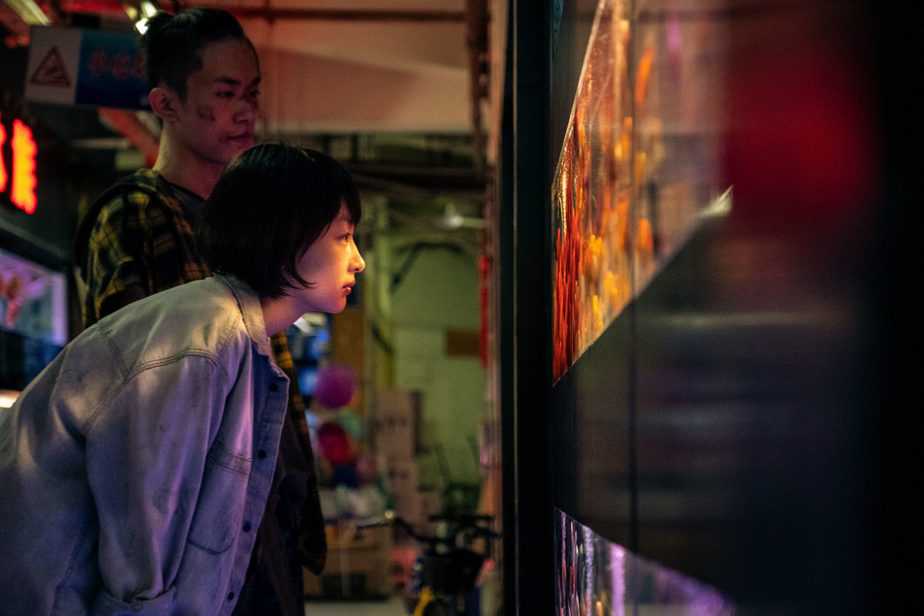“Antiporuno” is one of five films made by leading Japanese directors as part of Nikkatsu's Roman Porno Reboot Project celebrating the 45th anniversary of the genre. Roman porno films were Nikkatsu's response to falling ticket sales and the popularity of the low-budget pink film (pinku eiga) in the early 1970s. These were mainstream films, mainly marketed at a male audience, which can be categorized loosely as softcore pornography. Shot on a limited budget, generally in a week, the distinguishing feature of roman porno films was that they had to have a sex scene every 10 minutes. Aside from those restrictions, directors were free to experiment with both genre and narrative form.
“Antiporuno” screened at Japan Cuts

The emphasis on the reboot was to move the films away from their misogynistic roots and emphasis on male desire to focus on female subjectivity and desire outside the male gaze. “Antiporno” has been hailed as a feminist film in that not only is most of the cast female, but that it explicitly criticizes Japan's double standards in which female identity is constrained by the virgin/whore binary. At the centre of the film is celebrity artist and novelist, Kyoko (Ami Tomite) who takes pleasure in tormenting everyone around her, especially her docile, and would-be porno actress, assistant Noriko (Mariko Tsutsui). The film begins with a typical day in the life of Kyoko, who is visited by the fashionista and editor of a high-end fashion magazine, Watanabe, to interview and document Kyoto's artistic process.
Yet, all is not what it seems, and Sono breaks the fourth wall by not only revealing that the action is happening on a film set, but also through Kyoko's – perhaps too frequent – monologues directly to the camera. In addition, most of the action of the film takes place in the open-plan space where Kyoko lives and works. Colour is used to divide the space by attribute as well as creating a flow between spaces: the vibrant yellow walls of the sleeping area, broken by the deep blue sheets that adorn the bed, flow seamlessly in the work area, while red walls frame the minimalist bathroom. Paintings of women at different stages in their lives and in different roles, line the back wall of the live-work space. This is a space in which identity is performative, shifting between past and present, reality and dream. The colour palate as well as the emphasis on bodily functions – shitting, peeing, fucking – genders the space female.
There are the requisite sex scenes every ten minutes, but significantly Sono removes any type of visual pleasure associated with such scenes: not only is Kyoko sick every time she begins to experience pleasure but when Noriko is forced to have sex with one of the lesbian photographers accompaning Watanabe – Sono cuts away before the moment of orgasm – thereby avoiding the raped woman trope of roman porno (in which rape liberates female sexuality and desire) and subverting the genre from within. Further, when we revisit with Kyoto the loss of her virginity, it is a tawdry and passionless affair, mimicking similar scenes from the original cycle of roman porno in that the older male ends up forcing himself onto her. Yet her memories are unreliable, not more rooted in reality than the books she writes, as her memory/oedipal? desire of having sex with her father signifies. Both time and space are mutable, and events that take place are affective rather than reflective.
Using a saturated palate of yellows, blues and reds, Sono's excursion into roman porno feels closer to the low-budget and politically motivated pink film rather than its mainstream cousin. This is foregrounded by an intertextual reference to Wakamatsu Koji's “Violated Angels” (1967) – a film considered so extreme in terms of explicit sexual violence that it is still banned in the UK – in the scene in “Violated Angels”, the bloodied bodies of murdered nurses are arranged on a circle on a white sheet in an implicit visual allusion to the Japanese flag, here the schoolgirl Kyoto, wakes up in despair and is confronted with the sight of women of all ages, draped in white sheets, smeared with red paint looking directly at her. As in pink eiga, the focus here is on power relations, both between the subject and the state, and between man and woman. Freedom, we are repeatedly told, is illusory, a fantasy perpetuated by the state in order to keep its subjects docile. Hypocrisy is everywhere, especially in terms of constructions of appropriate femininity in which social expectations dictate that for woman, fulfillment can only be found within the structures of the family in which traditionally their identity was tied to their father, husband and sons. What Sono does in “Antiporno” is to demonstrate that despite gender roles are changing in contemporary Japan, traditional expectations continue to oppress woman (in 2014, Japan was ranked 104 out of 142 countries in terms of gender equality).Kyoko embodies these contradictions. Her desire to be a whore rather than a virgin is a metaphor for the need for change in the ways in which woman are still perceived in Japan. At the beginning of the film, she proclaims that there is a difference between being alone and independent: yet despite her protestations to the contrary, ultimately the film suggests that they are indeed the same. In addition, the prison of patriarchy can only be surmounted through death.
Ami Tomite is excellent as Kyoko, her performance continually shifting registers, from vacuous celebrity to dutiful daughter attempting to come to terms with her burgeoning sexuality in the face of parental opposition, and then would-be roman porno actress. Yet, all these facets of Kyoko are mere performances, there is nothing underneath the surface through which we can anchor reality. Like the caged bird and the lizard in the bottle which are used frequently to frame her, Kyoto is a prisoner of the four walls of her apartment cum. film set that attempt to confine her and her sexuality. The film ends in an explosion of colour: an eruption which signifies the impossibility of freedom from patriarchal systems of oppression.
Without doubt, Sono's “Antiporno” is mesmerising but rather than a celebration of female sexuality and desire, it ends in negation, unable to envisage a space between the virgin/whore dichotomy. At times, it was manic and too dialogue-heavy. However, in its subversion of the key features of roman porno, there is much to admire.


















